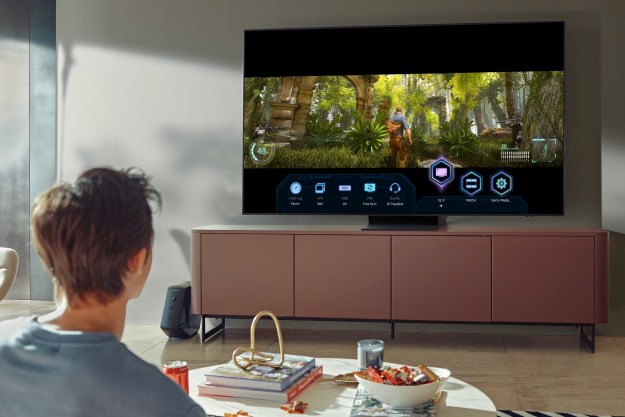 Today at the NAB 2013 conference in Las Vegas, Dolby, Philips and James Cameron’s Cameron | PACE Group (CPG) announced that they have agreed to begin collaborating on using the Dolby 3D format, and also begin integrating it into CPG’s content production. The move would ostensibly improve glasses-free 3D content in the home.
Today at the NAB 2013 conference in Las Vegas, Dolby, Philips and James Cameron’s Cameron | PACE Group (CPG) announced that they have agreed to begin collaborating on using the Dolby 3D format, and also begin integrating it into CPG’s content production. The move would ostensibly improve glasses-free 3D content in the home.
The three parties figure that glasses-free 3D presentation, which has seen mixed results thus far, can see a radical improvement by way of delivering higher-quality autostereoscopic 3D content using Dolby’s format.
CPG is said to have a fairly long reach in that it supports broadcasters, filmmakers, production studios and other creative teams, and now wants to take 3D to a new level by making it more compelling and visually appealing, all while ensuring no glasses are needed to watch.
“James Cameron broke new ground in entertainment with his use of 3D in film, but it’s been a challenge to bring his vision to the home and to smartphones and tablets,” said Vince Pace, Founder and Cochairman, CPG. “The Dolby 3D format gives filmmakers the means to bring an artistic vision through production and distribution all the way to presentation, while delivering what we believe to be the best possible 3D experience to consumers—without the need for special glasses.”
Dolby 3D is notable in the industry as a technology suite that can handle all sides in the production chain, from creation and delivery to playback. The key is that it also negates the need for a narrow viewing angle, so that viewers can enjoy the effect without having to sit at a straight angle to the TV.
“Dolby and Philips are committed to taking the 3D experience to the next level, so we are very pleased to be working with CPG to jointly promote a technology that will transform the way 3D content is consumed all over the world and to introduce a new way for the creative community to tell the story,” said Guido Voltolina, General Manager of the joint project.
Given that 3D viewing is nowhere near what was originally envisioned a few years ago, removing the need for glasses could be a big step in making it a more viable viewing option. It will be interesting to see if this triumvirate is able to pull it off for home viewers.
Editors' Recommendations
- You Asked: 3D VR, QDEL technology, and TV size vs. quality
- Samsung, Google are attacking Dolby Atmos’ monopoly on 3D sound, and it’s going to get ugly
- What is MPEG-H? The burgeoning 3D audio standard explained
- This free tool takes the guesswork out of planning a home theater
- Look out! 3D TVs could be poised to make a surprising comeback




